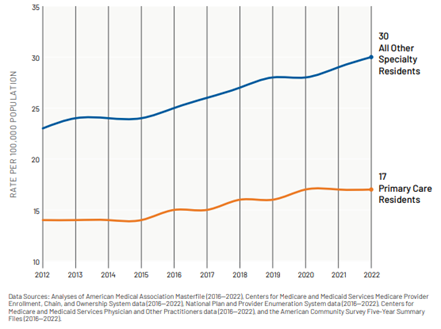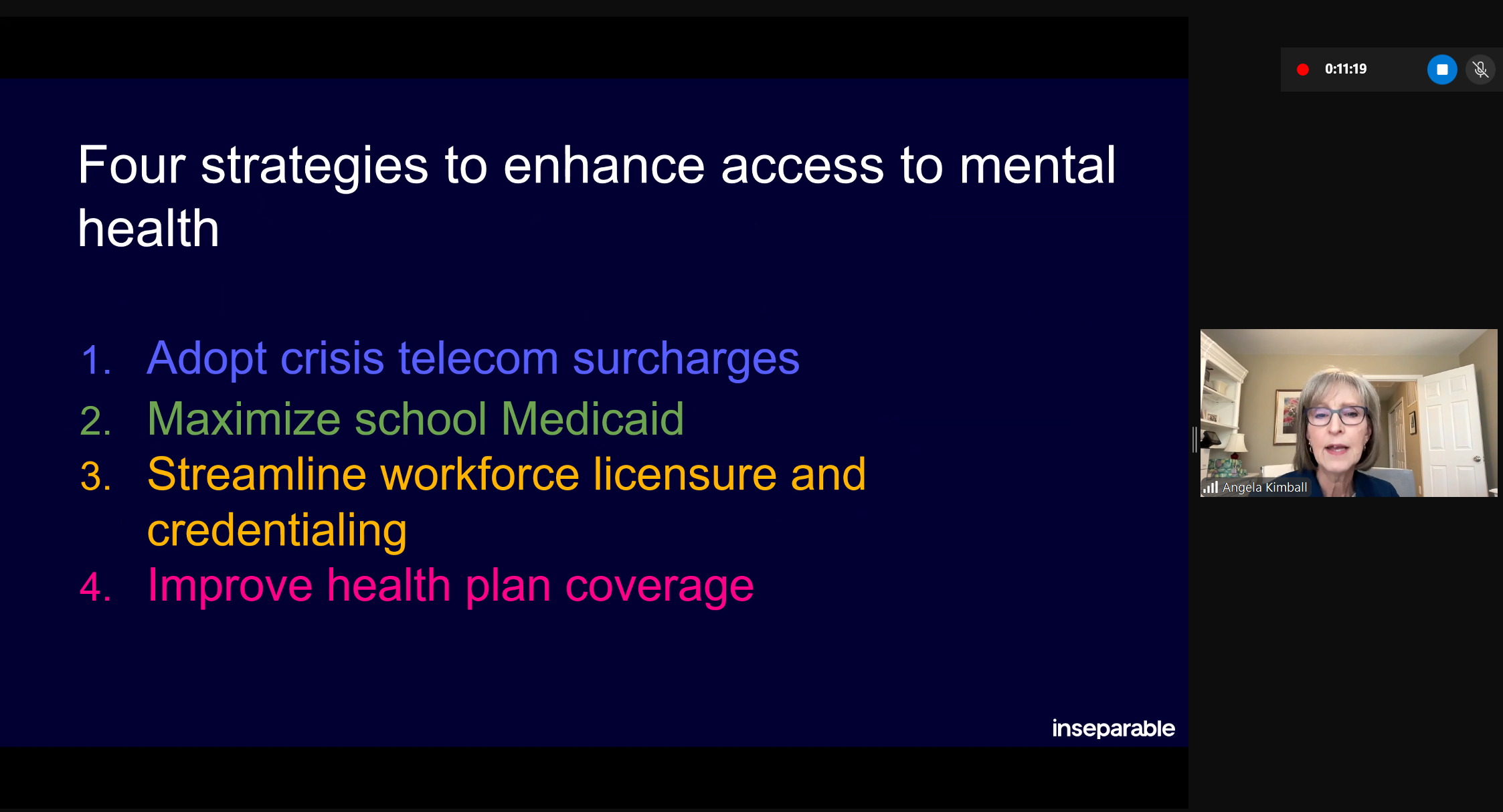Clear and contextual data that outlines the ecosystem of defense-related spending and the intersections to state investment can maximize efficiency, state-federal collaboration, and positive outcomes for infrastructure and community impact.
by Amanda Winters
States play a critical role in supporting the national defense mission. Installations, supply chains, service members and communities rely on a complex web of state, territorial, and federal systems. This ecosystem of investment and support builds off of the Department of Defense’s National Defense strategy and is resourced by Congress. Installation, equipment, personnel, and service spending drives the development of industry supply chains and regional economies. Foundational data on these DoD investments is captured in the annual Defense Spending by State (DSBS) report. This analysis is compiled to help state and local leaders assess a region’s defense assets and identify opportunities to target assistance to support more resilient and innovative communities and businesses. The National Governors Association is partnering with the DoD to explore the ways the DSBS data can inform and strengthen state economic and infrastructure planning.
The DSBS report is developed annually by the US Department of Defense Office of Local Defense Community Cooperation (OLDCC- formerly the Office of Economic Adjustment). OLDCC leverages the capabilities of state and local partners through grants and technical assistance to enhance readiness of defense installations and ranges and assists states and local governments to maximize support of the military mission. The DSBS report is a key element of OLDCC’s mission to provides high level insight for state and local partners to better understand the ways in which defense investments can be optimized and supported. The most recent report, released in January 2021, is the second to include an assessment of the defense footprint in the U.S. territories. This addition highlights the territories’ crucial role in the defense mission as well as the economic impact of these activities.
The data in the DSBS report provides an important first step- a door to open to other state/region specific planning conversations. With DoD personnel counts and payroll information as well as first and second tier contract spending, it can be used to better understand the ecosystem that supports defense communities and enhances and drives regional economies. As the commander-in-chief of their respective National Guards, Governors sit at the nexus between the national defense mission and state and local security and life-saving missions. The National Guard and Governors provide a unique perspective on the dual nature needs of the Nation – at home and overseas.
The key to impactful utilization of the Defense Spending by State report lies in its connection to other relevant federal data sources as well as state and local data. Additional data can fill in the details of the outline that the DSBS report provides to allow for meaningful strategic planning, and policy and program development. Since the development of the DSBS report, a number of states have commissioned studies to explore the impact of the direct and indirect effects of installations and defense spending on their economy.
States have also utilized the DSBS data as a starting point to better understand their industry supply chains, workforce development needs, and options for accessing and leveraging federal programs. Some states showcase the level of investment made in defense to attract business and feature their rankings as a key indicator of economic competitiveness.

Defense Spending by State Report supplemented by the ecosystem of other relevant Federal data sources and USA Spending

State infrastructure / economic / workforce / education data (workforce priorities, economic development goals, education / training assets, infrastructure projects)

(local employer data, specific installation context, asset mapping / needs assessment)
California

The Governor’s Military Council highlights several resources that measure the role that defense plays in California’s economy. Among these are the DSBS report and the California’s Research Bureau’s 2020 National Security Economic Impacts Report, which cites DSBS data and outlines defense’s impact on employment, economic output, and tax revenue.
Nebraska
The Commission on Military and Veterans Affairs in Nebraska commissioned a report to, in part, demonstrate the economic impact that defense has in Nebraska. The Bureau of Business Research at the University of Nebraska, which authored the report, cites DSBS data and highlights the degree to which defense spending contributes to the state’s gross domestic product (GDP).
Hawaii

Hawaii coordinates a planning effort that is focused on enhancing understanding of the economic impact of U.S. Department of Defense (DoD) contracts and grants awarded in the state of Hawaii. With approximately $2 billion in total value of defense contracts in Hawaii annually, any changes in DoD spending will have an impact on the economy. The Hawaii Defense Economy project is undertaken by the State of Hawaii, through the Department of Department of Business, Economic Development, and Tourism – Business Support Branch and is funded by the DoD – Office of Economic Adjustment. This project has been tasked with analyzing the impact of DoD contracts and grants awarded in Hawaii.
Alabama
The state of Alabama commissioned a study to fully assess the economic impact of all military activity within the state of Alabama. Data were compiled on military spending, SBIR awards, military-related grants, personnel counts, retiree counts, and economic spending patterns to create inputs for final economic impact models.
Update
The most recent DSBS report was released in October of 2021, it provides “public and private leaders with a starting place to assess how defense investments across installations and the private sector can be optimized by supporting regional innovation, industrial capability and capacity, supply chain resilience, and cultivating a skilled workforce.” The FY20 report, as well as previous years’ reports, can be found on the OLDCC website at: https://oldcc.gov/dsbs-fy2020
State/Territory Defense Spending
Click on a State or Territory* below to see individual spending pages from the Defense Spending by State Report.
* FY2020 analysis for American Samoa, the Commonwealth of the Northern Mariana Islands, the Commonwealth of Puerto Rico, Guam, and the Virgin Islands of the United States will be available later this year. FY2019 information is available above.
Additional State Examples
- Missouri Defense Supply Chain Analysis
- Cybersecurity And A Trusted Supplier Network For The Defense Industry Supply Chain
- Pure Defense | Michigan Economic Development Corporation
Additional National Resources
- Levels and Types of Federal Defense Spending Differ Across States | PEW
- Budget Basics: National Defense | Peterson Foundation
- Military’s Impact on State Economies | NCSL












